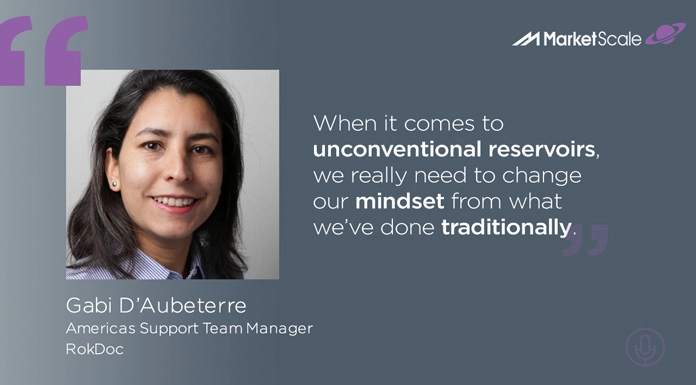Why You Shouldn’t Be Using ‘Conventional’ Methods for Unconventional Drilling
On this episode of the Sciences Podcast, host Tyler Kern dug deep, so to speak, on the topic of using big data for conventional and unconventional reservoirs with two geoscientists from Ikon Science. Today’s guests are Gabi D’Aubeterre], Americas support team manager, and Yoryenys Del Moro, regional product champion for wells.
Del Moro said current methods are just scratching the surface of what kind of production is possible.
“To get more production, … we need to use more data, including seismic and well information,” she said.
 Ikon Science develops pioneering GeoPrediction software technology and solutions to help customers have better hit rates and faster production with reduced cost and cycle time. The quantitative interpretation of seismic and well data has been widely successful for conventional operations around the world but lags in unconventional reservoirs, D’Aubeterre and Del Moro said.
Ikon Science develops pioneering GeoPrediction software technology and solutions to help customers have better hit rates and faster production with reduced cost and cycle time. The quantitative interpretation of seismic and well data has been widely successful for conventional operations around the world but lags in unconventional reservoirs, D’Aubeterre and Del Moro said.
“When it comes to unconventional reservoirs, we need to change our mindset from what we’ve done traditionally,” D’Aubeterre said.
Unconventional reservoirs pose a unique challenge for geoscientists. While the rocks in conventional reservoirs effectively traps oil and gas until it’s drilled, this same trapping mechanism is not present in more difficult unconventional plays. In a conventional reservoir, the type of rock (usually a sandstone) traps the hydrocarbon effectively within its porous space, but this is not the case for unconventional reservoirs.
“In an unconventional reservoir, the hydrocarbons do not flow naturally and are trapped within the rock, within low permeability and low porosity units” D’Aubeterre said. Fracturing the rock and shale to extract that oil and gas makes a challenge for geoscientists and engineers.
Del Moro agreed, saying complications exist when geoscientists and engineers look to fracture the right area of rock for the right natural resource to produce hydrocarbons.
“So you need to apply the techniques that allow you to define and detect what you’re looking for in the shales, fractures, and natural fracture zones,” Del Moro said, explaining seismic data allows you to do that.
D’Aubeterre and Del Moro shared specific examples of quantitative interpretation of seismic and well data in unique settings and how the machine learning and integration.
Read more on the Ikon Science Website.
Follow us on social media for the latest updates in B2B!
Twitter – twitter.com/ScienceMKSL
Facebook – facebook.com/marketscale
LinkedIn – linkedin.com/company/marketscale









